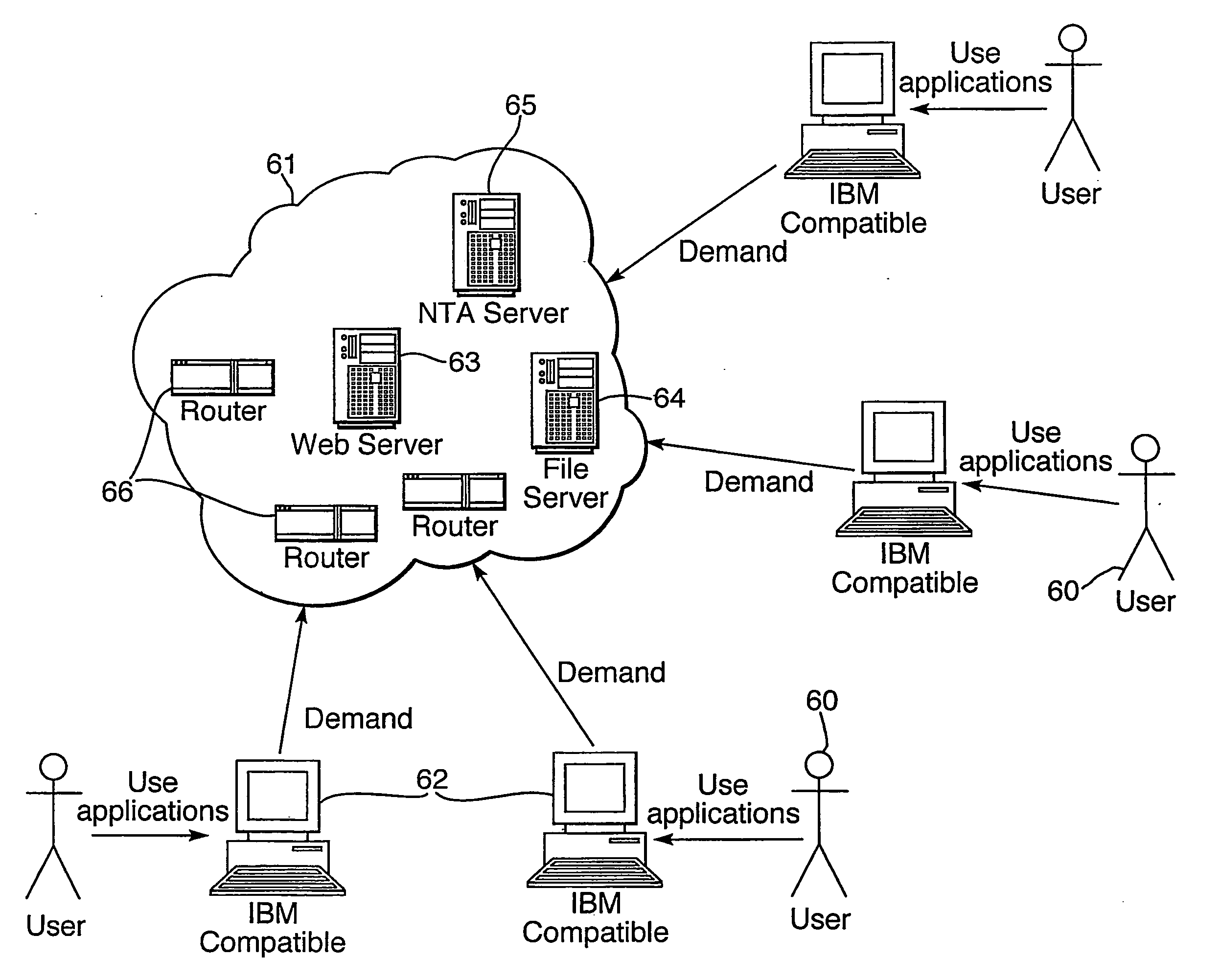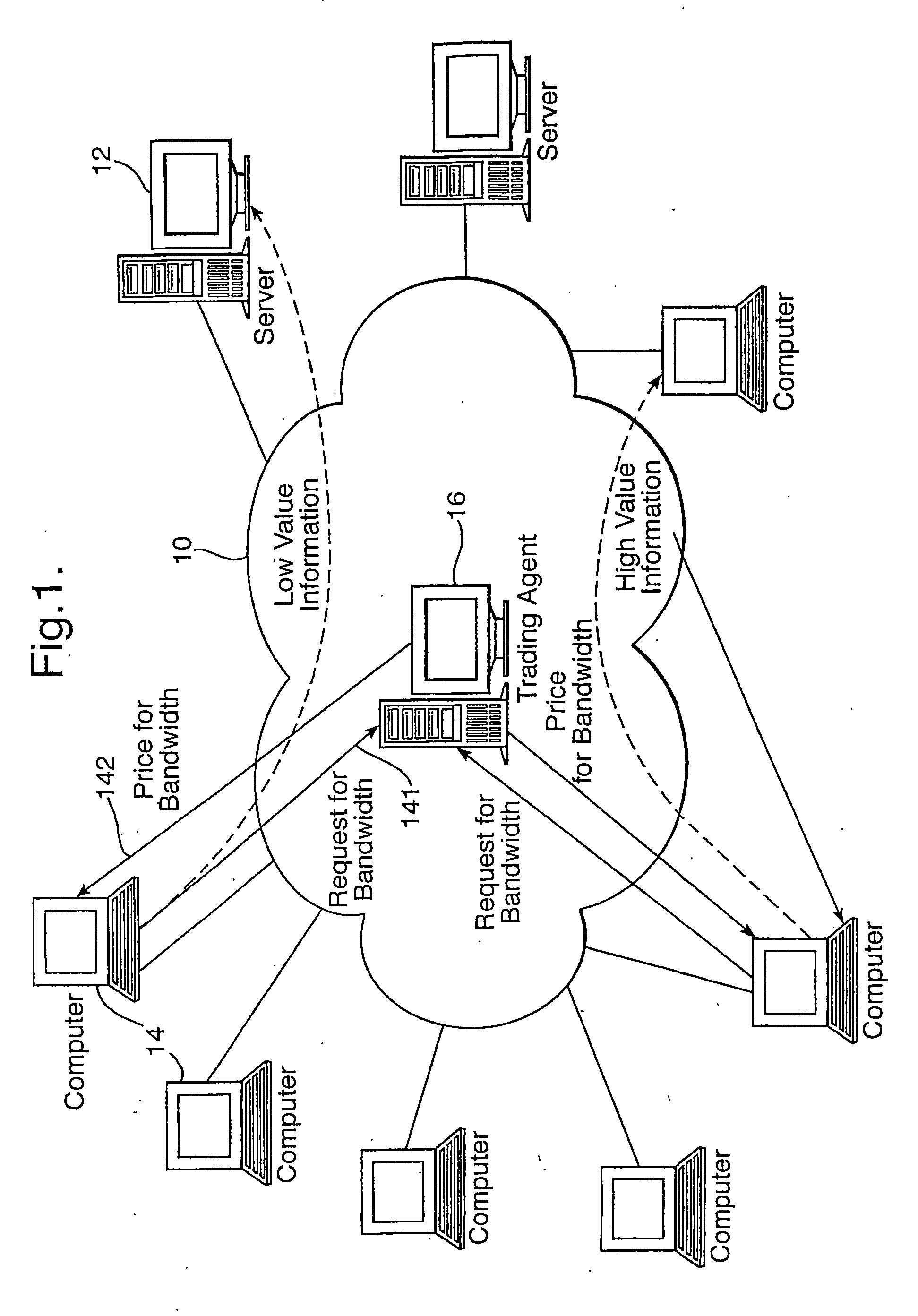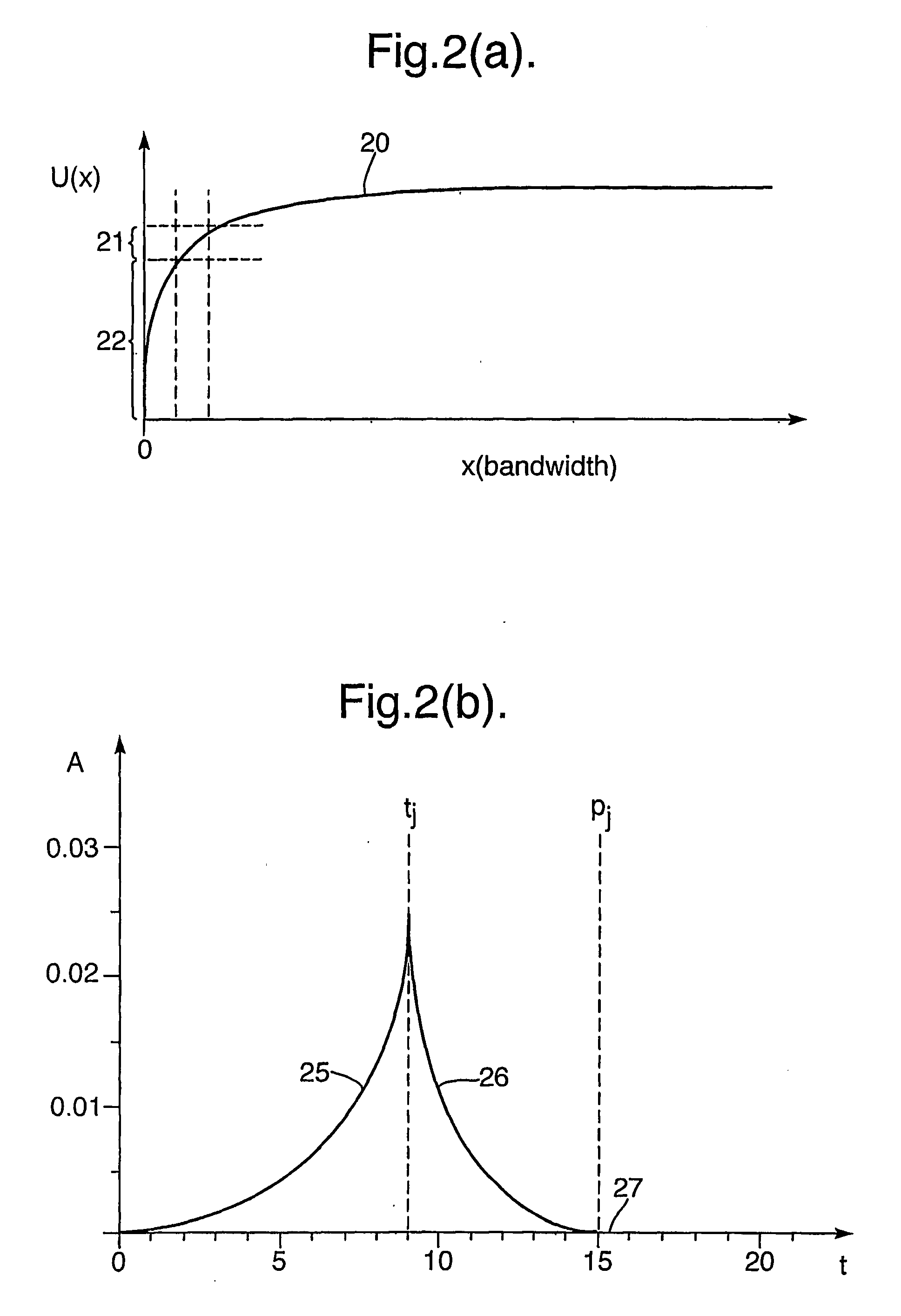Shared Resource Management
a resource management and resource technology, applied in the direction of multi-programming arrangements, instruments, program control, etc., can solve the problems of application layer collapse, data loss, less profit,
- Summary
- Abstract
- Description
- Claims
- Application Information
AI Technical Summary
Benefits of technology
Problems solved by technology
Method used
Image
Examples
Embodiment Construction
[0057]A first embodiment of this invention is applied to the management of user demand on a bandwidth-limited communications network.
[0058]As will be apparent to the person skilled in the art, the scope of the solution described above is much wider than its application to communication systems and can be applied to many other analogous problems.
[0059]Referring to FIG. 1, a computer network 10 may be treated as a cloud of resource that can be used to transfer information. This resource could be a server's 12 capacity to serve a number of users 14. Here the resource is considered to be bandwidth. Users are allocated money and an income to buy bandwidth to transmit information. Users also have a utility function that they use to determine whether to buy bandwidth and, if so, at what rate and when. A network agent 16 calculates a price for bandwidth according to demand at any time. For a user to buy bandwidth, the user must declare 141 its bandwidth need to the agent, who in turn respon...
PUM
 Login to View More
Login to View More Abstract
Description
Claims
Application Information
 Login to View More
Login to View More - R&D
- Intellectual Property
- Life Sciences
- Materials
- Tech Scout
- Unparalleled Data Quality
- Higher Quality Content
- 60% Fewer Hallucinations
Browse by: Latest US Patents, China's latest patents, Technical Efficacy Thesaurus, Application Domain, Technology Topic, Popular Technical Reports.
© 2025 PatSnap. All rights reserved.Legal|Privacy policy|Modern Slavery Act Transparency Statement|Sitemap|About US| Contact US: help@patsnap.com



